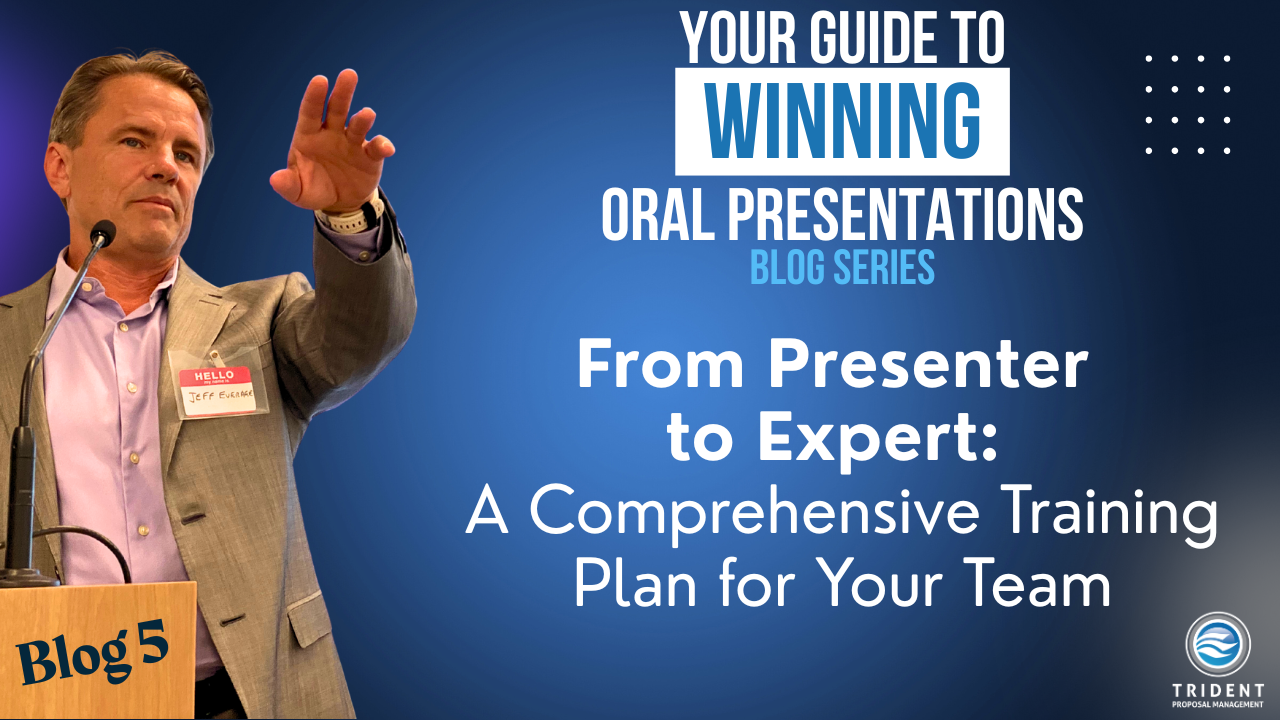3 Rules to Keep your Outline In Line
Jan 10, 2023
The request for proposal (RFP) is in your hands (finally!), and the team is eager to get going, so you do the intuitive thing you’ve always done and start writing immediately. A week of 12-hour workdays later, you give the rough draft to the reviewers…and they thrash it! It is too hard to grade, it does not answer all the requirements in the RFP, and the structure doesn’t make sense. So much wasted time and money. Does that sound familiar? We won’t say this very often when it comes to writing proposals, but there is an easy, simple solution to avoid this: start with an outline.
HERE’S WHY IT WORKS.
Government RFPs have many detailed, and sometimes confusing, requirements. If you step back and plan your proposal response methodically (before you start writing), you can ensure the entire team is following the same formula and working toward a common goal before wasting a ton of time and energy writing. Your first priority should be to develop a response outline that will give the writers critical guidance on the structure, content, and writing cadence of the final product. We have three rules that will help you create an outline that is “in line” with the response.
HERE’S HOW YOU DO IT.
Rule 1: Start with a blank slate and just the RFP requirements.
Never cut and paste from other proposal outlines, marketing material, examples from the internet, or anything already written when you write your outline. You must work from the newly released RFP requirements, not from the previous one or a draft. The number one cause of proposal rewrites is non-compliance.
At the outline phase, starting from old material practically guarantees a rewrite in your future because it traps you into a mindset that you’ve already addressed the government’s requirement(s). Instead, you must think about what the Government is actually asking for in the context of the entire proposal, using the instructions and evaluation criteria to organize and focus the planned content. Borrowing from other proposals or material may seem to be a time-saving technique, but it will actually take you more time to revise the outline later to align to the actual RFP requirements. Giving the writers an outline aligned to the RFP for their first draft ensures that the team receives proposal input that is MUCH closer to compliant and complete without any omissions or pensive wanderings through ungradable content.
And that’s another point: you don’t want to include a lot of extra material in a proposal that isn’t expressly asked for in the solicitation. Evaluators are far more likely to be frustrated by having to review extra material (or worse, sift through it to find what they are looking for) than they are to be impressed by your thoroughness. The solicitation requirements already reflect what information the evaluators are interested in, and it is the ONLY information they are permitted to evaluate in your proposal.
Rule 2: Populate the outline with bullets, not prose.
While the section headers and writing cadence may be in sentences, writers should craft the first draft of their response in bullet format. It is tempting to start writing paragraphs or cutting and pasting previous content but we recommend refraining from this practice – you’re just making it harder for your evaluators to see your storyboard. The bullets should capture the main ideas to be covered in each section. Even if your writers are the subject matter experts who perform the requirements daily, scaling the descriptions back to provide step-by-step bullet responses will accomplish a few things. First, it will help the writers organize the main points they want (or must) make in each section. By contrast, lengthy paragraphs in an outline make it hard for evaluators to assess whether your proposal has a designated place to address all the requirements. Second, an outline helps you develop and implement an organized cadence that introduces a problem, describes a solution, and explains the advantages of that solution. In other words, it sets your writers up to adopt high-impact writing techniques automatically. Establishing this cadence can also help make the document have one voice so it sounds like it was written by one author rather than pieced together from numerous disparate sources. Finally, this format allows initial reviewers to easily see the processes, tools, and examples without feeling the urge to edit the writing style.
Rule 3: Always get agreement on your outline before you start writing.
The proposal team and/or leadership should review and approve your outline before the team transitions to writing prose. Note: If you’re curious about why this is Rule 3 and not Rule 2, it’s because your reviewers need to chew on at least a little content (in bullet form, of course) before they can develop an informed opinion about what information groupings/response organization makes sense. At a minimum, the review should check that the outline addresses every point in the requirements and evaluation sections of the RFP (compliance), the completeness of the response, the organization for ease of grading, and placeholders for examples of your work and company differentiators.
Remember how we mentioned that RFPs are really detailed and sometimes confusing? If you’re not organized, that solicitation chaos can trickle into your response, too. We’ve already alluded to this, but one of the best things an outline can accomplish is helping your team figure out what requirement you will address where. Have you seen any of these scenarios before?
- Scenario 1: You have a 12-page Technical Volume page limitation, but you must also address your approach to 27 technical tasks from the Performance Work Statement (PWS), and each technical task has two or more subtask levels.
- Scenario 2: You need to submit resumes for key personnel that include a chronological work history, demonstrate experience in certain PWS tasks, and show how your candidates also meet specific Labor Category qualifications all in the span of two pages per resume.
- Scenario 3: The evaluation criteria say there needs to be low risk of unsuccessful performance during transition, but there’s no designated section to describe your Transition Plan.
- Scenario 4: The team developed some great, compelling Win Themes, but has no idea how to work them into the story so that they are effective (and gradable).
Starting with an outline will help you plan your page allocations and content layout (and by extension, the detail with which you can address each requirement). Play around with some templates if you must include resumes or past performance citations so you can get a sense of what format will allow you to capture the most information in the clearest way. If you have duplicative technical tasks or deliverables, is there a way you can group or label the information so that it is easy to find without being tediously repetitive for a reader? Or, do you need to ask a clarifying question to the Government (or ask for more page count) before the Q&A period ends?
Getting all these questions answered early in the response window will not only help avoid rework, but it will keep your team from becoming frustrated by yo-yo feedback from reviewers (“Try it this way! Oh, never mind, I liked it better before…”).
Conclusion
It’s counterintuitive but true: less can be more when it comes to proposal writing. Starting with an outline gives you the right building blocks, organized in the right way, to make your content compliant, clear, and compelling. We know it’s easy to feel behind the moment a solicitation is released, but don’t be tempted into taking a short-cut that ultimately gets you to the wrong destination in the form of a rewrite or worse, disqualification due to non-compliance.
If you’re new to this outlining idea, we’re here to help! Having fresh eyes provides an unbiased view on whether the structure, cadence, and content alignment answers the RFP requirements. Trident is staffed with a slew of capture and proposal experts who can help you not only draft that outline but give you the tools for future outlines as well. Learn more about our capture strategies and proposal management support on our website.
Written By Rebecca Wayland and Jennifer Wineinger
Rebecca is our Chief of Staff. Rebecca is a proposal expert offering comprehensive proposal management, capture support, market research, and training. Not only is she the author of The FastProp Process, but she is also our GWAC and MA-IDIQ lead, so if you’re exploring one of these contract vehicles, she is definitely your SME. As a U.S. Navy veteran and military spouse based in Hawai’i, she supports clients around the world as part of our globally dispersed team.
Jennifer is a capture and proposal expert at Trident. Jennifer’s skills as a proposal manager and capture manager include shaping, call plans, competitor and teammate research, market research, and pipeline development. As an Army veteran, a military spouse, and the parent of an active duty service member, she is based in the National Capitol Region where she supports clients around the world as part of our globally dispersed team.



